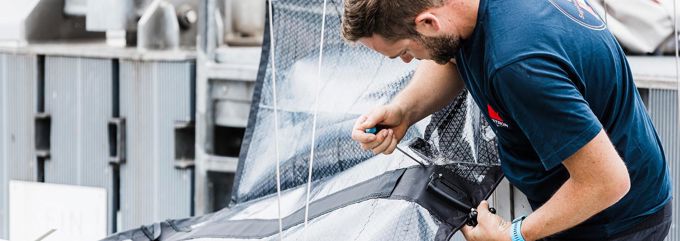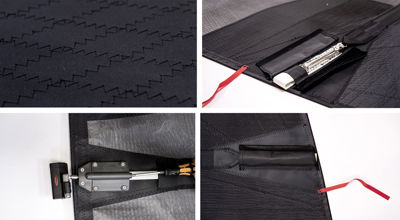
The sailing season is here, and it is time to bring back your sail wardrobe from its winter hiatus!
Here is a handy set of tips from our sailmakers on what you should spend a bit of time looking out for when getting back for the new season. If you have any questions or issues, don't hesitate to contact your local Elvstrøm SailPoint.

It is essential to give the sails a good check before starting the season - just for some peace of mind as you wouldn't like to miss out the good weather if your sails have to go for repairs. Here are our two checklists for sails and for furling systems:
Checking the sails
- Inspect all stitches on the sails - if damaged, please contact your local Elvstrøm SailPoint
- Take a close look at all batten pockets, inspect the battens and check the pocket latch. Make sure to check if all the luff cars and all other fittings on your sails are in good shape.
- Check the luff tape and bolt ropes for damage and abrasion.
- Inspect the leech of the sails. Minor marks from spreaders and mast fittings can evolve quickly during the season, so make sure to come prepared and patch the damaged area with self-adhesive cloth. Contact your local Elvstrøm SailPoint if you find major marks on the sail.
- Try unpacking your spinnaker and other packed sails to ensure they are whole and undamaged - repack them to be ready for hoisting.
- Finally, you should also inspect your leech line and the cleat/velcro and check that the reefs on the main sail are intact.
- If you find spots or blemishes on your sails, you can try and clean it off with warm water or water mixed with dishwashing liquid or a mild detergent. Use a soft brush to agitate the spot.
- You should NEVER use any chemical solvents or detergents as they may cause damage to the material integrity of the sail.
Checking the furling system
- Inspect your furling system(s) for damage to the foil, the drum and the furling line itself.
- Make sure the mast and furler grooves are clean - salt, grime and insects can clog up the line. Clean it with a cloth and some silicone free lubricant. Avoid using any type of grease!
- Clean and grease the threads on all turnbuckles before you trim the mast.
- Trim your mast - aim for a moderate mast curve without having tension on the backstay on a conventional masts. If you have a furling mast, you should aim for having hardly any curve.
- Inspect your halyards for damage or abrasion. If you find abrasion, you can fix it by cutting off the splice and then resplicing the halyard at the other end of the rope if it's long enough. This moves the damaged part in front of the clutch/roll - replace the entire mantle if it is heavily damaged.
- Check that the shackle works.
- Inspect the jammer and see if the cleats are fine - this is important in order to avoid that the halyard slips.
- Give the sheets a look and check for abrasion and damage.
Avoiding UV and moisture related damage
This final tip is more related to preventative maintenance, as sailcloth has one main enemy: UV light from the sun. The UV breaks down the cloth over time, so you should take care during the season. Make sure that you always use sail covers when the sails are not in use. Boomcovers, Furlcovers and ZipPacks are great alternatives that shield your sails and help making them last much, much longer.
Getting rid of moisture is key when it comes to avoiding mildew developing. You should never leave a wet set of sails furled or packed for more than a few days. The moisture causes mildew to grow, and the combination of moisture and salt also has a strong hydroscopic effect, so it will keep the moisture in the sail.
This also means that avoiding moisture, salt and grime on the sails is a really important step to take continious care of during the season. Do also make sure that your sails are dry before storage, and if mildew has developed on one sail, make sure that it is not stored with clean sails. Do also make sure to rinse the salt off the sails using fresh water and let them dry before packing or furling.